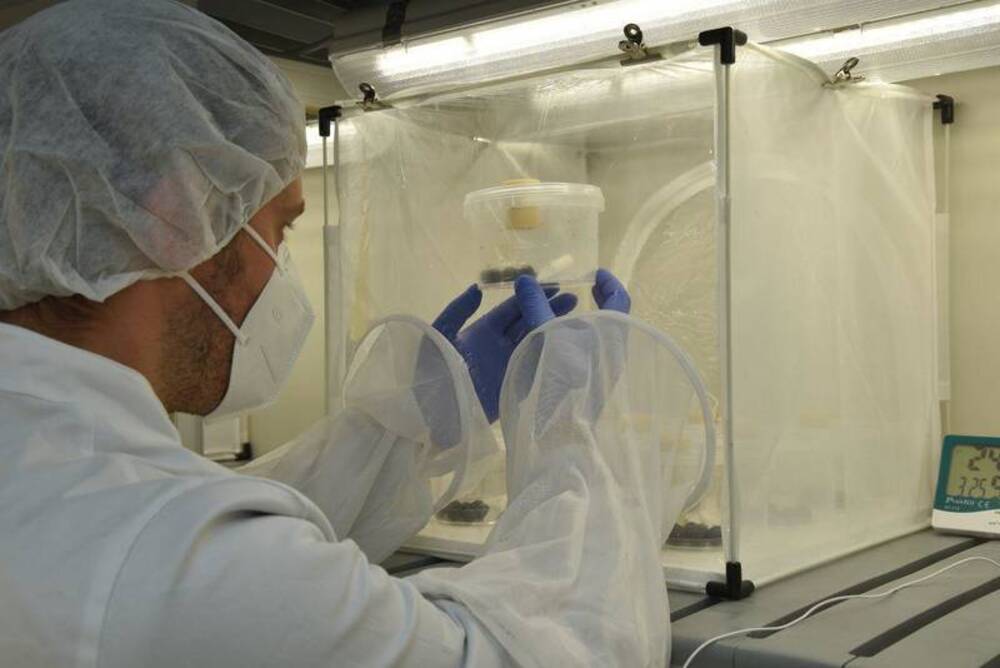X-disease alert eases in Oregon: phytoplasma vectors are less aggressive than in Washington. A different composition of leafhopper species explains why Oregon cherries are less affected by X-disease—a disease still worrying producers in Washington.
While many U.S. cherry-growing areas remain on high alert for X-disease—or “little cherry disease”—Oregon growers appear to be breathing a bit easier.
Unlike in Washington State, where infected trees are often removed in large numbers, the disease’s incidence in Oregon is lower. The reason? It comes down to the insects.
Different leafhoppers, different risks
X-disease is caused by a phytoplasma transmitted by various leafhopper species. However, not all seem equally efficient at spreading the pathogen.
In The Dalles—Oregon’s primary sweet cherry production region—the dominant species is Euscelidius variegatus, which accounts for about 80% of the local leafhopper population.
According to Chris Adams, entomologist at Oregon State University’s Mid-Columbia Agricultural Research and Extension Center, E. variegatus is capable of transmitting the phytoplasma, but it does so less efficiently than other species.
This is partly because it primarily lives in the drive rows between trees and rarely enters the canopy, where it could infect the plants.
Another key factor is the time required to become infectious: even after feeding on an infected plant, E. variegatus takes a long time to carry and transmit the pathogen.
In the 1950s, researchers in California had to inject it with the pathogen just to study its behavior.
 Not all leafhopper species are alike. Among those proven to transmit X-disease in stone fruits, geographic distribution varies. The predominant species in Oregon’s Columbia Gorge growing region is Euscelidius variegatus (1), a less efficient vector compared to the main culprit in infected Washington orchards, Colladonus reductus (2). Colladonus geminatus (3) sometimes appears in north-central Washington but is not the main concern. (Photo courtesy of César A. Reyes Corral/Washington State University)
Not all leafhopper species are alike. Among those proven to transmit X-disease in stone fruits, geographic distribution varies. The predominant species in Oregon’s Columbia Gorge growing region is Euscelidius variegatus (1), a less efficient vector compared to the main culprit in infected Washington orchards, Colladonus reductus (2). Colladonus geminatus (3) sometimes appears in north-central Washington but is not the main concern. (Photo courtesy of César A. Reyes Corral/Washington State University)
Washington remains under pressure
The situation is quite different in southern Washington, where the main leafhopper vector is Colladonus reductus, which is much more efficient at spreading X-disease.
Complicating matters is Colladonus geminatus, a longtime nemesis of the sector since the 1950s. Though less common today, it still appears, especially around the Wenatchee area.
As Tobin Northfield, entomologist at Washington State University, points out, pressure remains high in that region: an infected tree must be removed immediately, as there is no cure for the disease.
Fewer tree removals in Oregon, more research
In Oregon, growers have removed fewer hectares compared to their Washington counterparts.
This has allowed researchers like Adams to focus on studying the life cycle and behavior of E. variegatus, including controlled releases of the insect in experimental blocks.
Such practices would be deemed too risky in the presence of more infectious species like C. reductus.
Ashley Thompson, Oregon State University Extension specialist, notes that some local growers remain cautious and remove suspect trees at the first sign of infection, while others take a more wait-and-see approach.
Overall, however, concern is shifting elsewhere: tomato ringspot virus—spread by nematodes—and insects such as the spotted-wing drosophila and the western cherry fruit fly are currently more feared.
And if there’s anything truly keeping growers awake at night, it’s labor costs, bureaucracy, and market access.
“For many, X-disease is no longer at the top of the emergency list,” Thompson concludes.
Text and internal image source: goodfruit
Opening image source: Michel Ehrhardt
Cherry Times - All rights reserved













